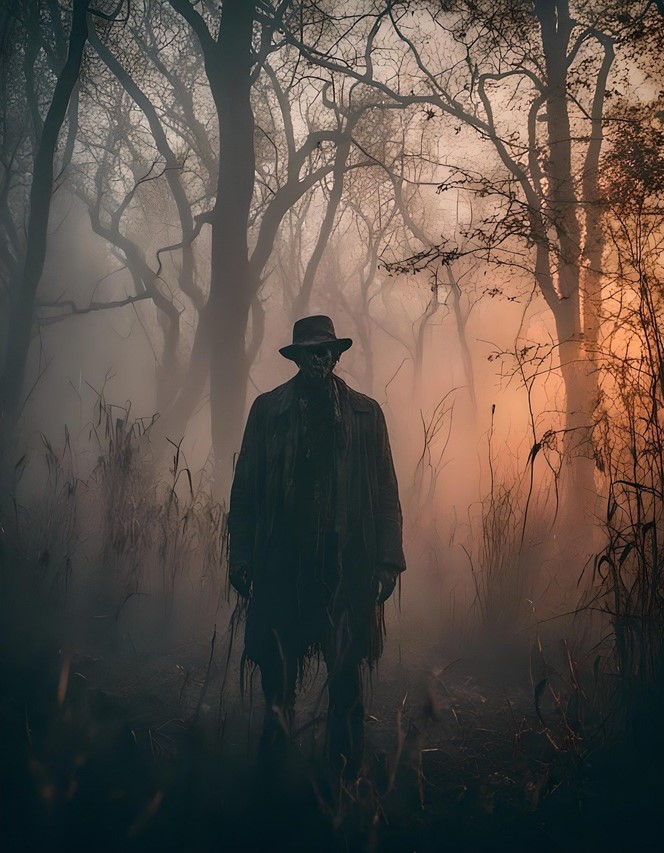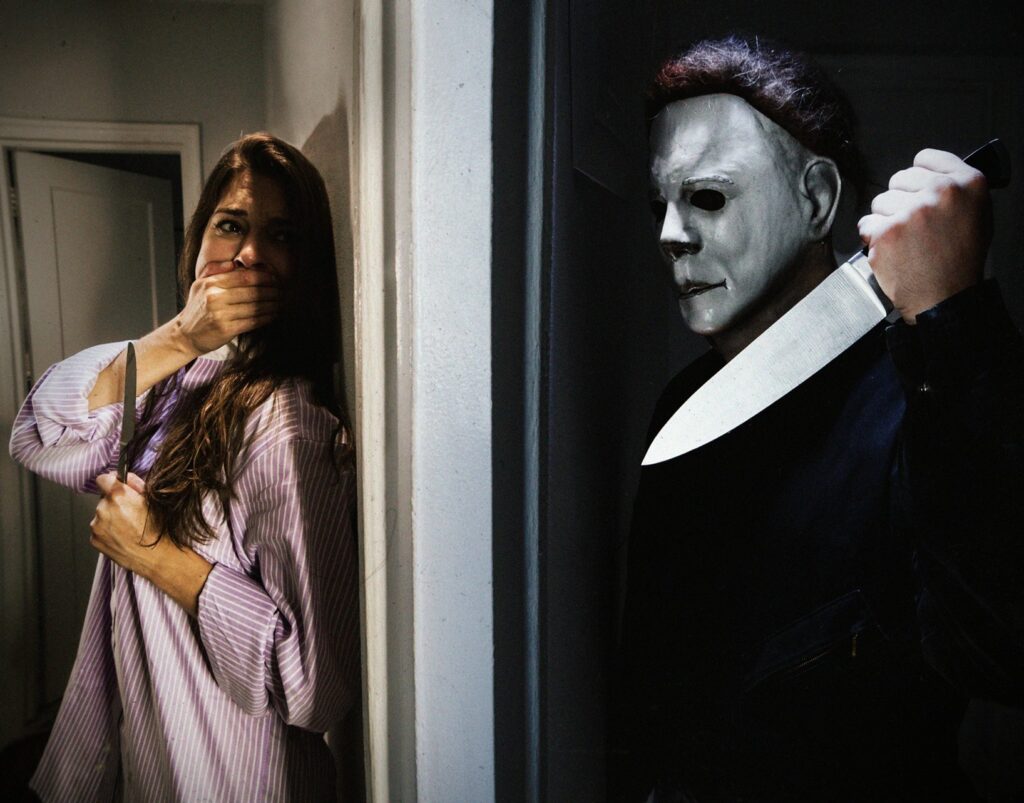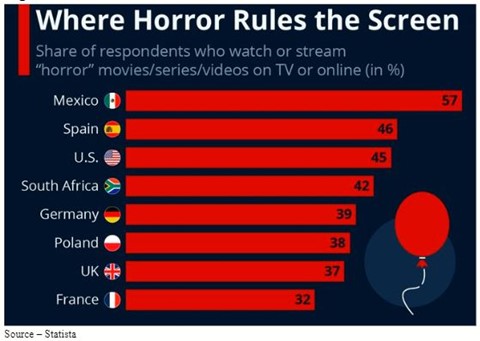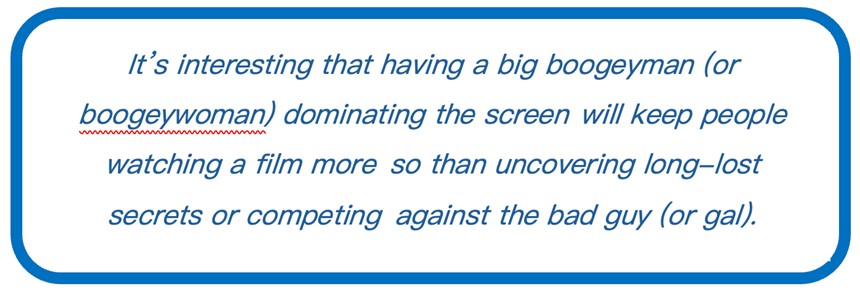We admit, we do like a good horror film, and it seems that we are not alone when it comes to that genre. And right now seems to be the perfect time to sit back, or on the edge of your seat, and watch one, with Halloween right around the corner. Elections are scary business, too, and that is also right around the corner.

“We’re a statistical improbability. And now they want to see who will be the luckiest among the lucky.” – Zoey Davis, “Escape Room,” Columbia Pictures, 2019
With so many elections going on around the world this year (97 countries, including the ugly one here in the US), we needed some solid/safe escape from the creepiness and grossness of the real world. So, we did what any normal/smart person would do… we dug into the whole idea of horror films. That included watching a couple of the new ones and revisiting some classics.
Of course, that meant we had the family room and big screen to ourselves because the wife won’t have anything to do with blood, guts, or gore. Don’t get us wrong, we’re not really into violence or messy gore for the sake of gore. But, the little chest buster in the first Alien was a helluva shock to the system, and yet Sigourney Weaver (Ripley) didn’t back down from the challenge.
The biggest problem for us is how to categorize a film as a horror movie. Sure, if Stephen King is listed in the credits, you’re pretty sure of what you’re watching because he’s widely regarded as the master of horror. Of course, if you bring up Alfred Hitchcock, it’s a little tougher because most think of him as a master of suspense, not horror. But we feel classics like Psycho, Frenzy, and The Birds are solid horror films because they showed us the dark side of people and showed us threats that people couldn’t control. Hitchcock’s use of shadows and audio signs and music put you on the edge of your seat because you knew bad stuff was going to happen.
One way to identify a movie as a horror film is that it will have sequels or even become its own sub-genre. For example, directors, actors, writers, and crews can thank George Romero for releasing zombies on us again and again and again when Night of the Living Dead was released back in 1968. We’ve enjoyed it every time we’ve watched it, even though we were really PO’d at the end. Ben (Duane Jones) did a fantastic job of trying to protect folks from the zombies, only to walk out into the morning light and have some idiot kill him just to be on the safe side. That really ticked us off!

We’re not into much of the franchise stuff, but we all know that when one project earns money, more will follow. Having a creepy villain like Freddy Krueger or Jason is a place to start, but what they really need is a damsel in distress or scream queen to put the film over the top. Jamie Lee Curtis (who probably got her scream from her mother in Psycho) is our favorite and the one who took the fight to Michael Myers from 1978–2022.
Being tough, attractive, and driven made for a suspenseful, terror-driven, and interesting story that gives people someone to cheer for when they show you that you can stand up to and take fear head-on.
There are a lot more good/great horror filmmakers, and thanks to global streaming media services, we’re able to share/experience projects from around the globe.
“The films have always been produced and available,” said Allan McLennan, CEO of 2G Digital. “However, the low-budget projects were often given limited distribution because of their being produced in a specific language. But with today’s advanced AI-enabled localization services, studios and streamers can quickly, accurately, and economically make them available in any language so people everywhere can enjoy/experience them as though they were produced in their home country.”
Sometimes (often) it’s difficult for industry executives and experts to accurately define when a film fits in the horror genre. But with the movie magic, advanced technology, and the global reach/exposure we have with a broader spectrum of horror film types, they’re becoming more important release valves for folks in every walk of life and every corner of the globe.
Whether movies are filled with ghosts, monsters, masked stalkers, or deep-down personal fear, filmmakers often find it difficult to pinpoint what terrifies the audience. That’s rather important because it helps determine if the film gets green-lighted or not and whether the project will be profitable or another studio/streamer write-down. The major components of horror films are spine-chilling music, precise tension, and suspense, and shops like A24, Blumhouse, and others have gotten very good at getting the mix right.
To understand the genre better, we turned to film data research expert Stephen Follows. It turns out that he is putting the final touches on his “Horror Movie Report 2.0,” the most comprehensive study of the genre around. While he’s a nice “normal” guy, Follows has spent a lot of time gathering and analyzing data on every horror film ever made. The report, which we aren’t promoting, covers everything from development, production, and distribution, as well as profitability. Follows noted that horror films are perennial favorites with filmmakers because they are fun to make, can be developed/delivered more quickly and on a lower budget, and can make money.

The final point is obviously most important, and that’s because folks young/old, male/female are attracted to a good slice of horror—spooks/ghosts, the paranormal, aliens/monsters, and the evil, psychological underbelly of men/women. Perhaps that’s because horror is a mirrored reflection of our societal fears, and people can process/address them without being endangered.
A good horror story isn’t one-size-fits-all. There are underlying messages that attract people to enjoy certain sub-genre films over others, making them interesting and viewable. For instance, horror films can be sub-categorized into horror comedy, horror romance, horror mystery, horror drama, horror thriller, horror sci-fi, horror fantasy, and horror action—ranked accordingly to their estimated profitability.
One of the keys to the success of horror films is that they can (and usually do) include storylines from other film genres. Overall, movies in this category (with more than 50% released in theaters) generated profit, which compares very favorably to the industry average of 37% across all categories. According to Follows’ research, over a 21-year period, profitability has remained relatively consistent. And of course, if you’re interested in adding insurance to the project’s investment, throw in some comedy and/or romance to appeal to the vast majority of the potential audience.

Projects like Paranormal Activity and The Blair Witch Project are often cited as two of the most profitable films made, costing $15,000 and $60,000 respectively; but they are seldom included in the industry profitability reports because they are what most folks in the industry consider total anomalies or dumb luck/being in the right place at the right time. But others found footage films are generally more widely and enthusiastically received by the theater and home crowd (meaning more profitable). On the other hand, monster films are usually more expensive to produce and have great difficulty in turning a profit.
The biggest divergence comes in the horror film category comes between what the audience thinks is good and what “expert reviewers” express. Consumers (people who buy tickets and subscribe to streaming services) appreciate good horror films more than self-appointed film experts. Sometimes, it doesn’t pay to overanalyze a film and just consider it good entertainment.
Horror films have had a bum rap for more than 30 years. Say it’s a horror film to the experts, and they almost automatically say it’s a second-rate film with second-rate writers, actors, and production teams, produced to elicit cheap scares and vast volumes of blood coming from spare body parts. Fortunately, they’re not the ones who payfor their theater tickets or their streaming service. The folks who spend their time/financial budgets go see the films to experience life at multiple levels. They see stories that address mental health, social class, racism, bigotry, abuse, bias, and other cultural issues that they can identify with in their own lives.
And the hour or two in front of the screen gives them the opportunity to release their frustrations and angst, and heal—if only a little. In addition, they know they aren’t alone in their issues, problems, concerns.
The truth is that the depth and breadth that horror films cover has expanded—dramatically and professionally. Well, not completely when it comes to professionally, because films that the industry and reviewers put in the category haven’t won an Oscar since 1992 for Silence of the Lambs (taking home five statues). To even be considered in the ensuing years, folks rationalized the films as being in different categories, something that is more aloof and more “worthy” of the Academy’s consideration despite what the ticket-buying, viewing public said.
With elections over or nearly over, and the turmoil around the world—mass shootings, war, out-of-control AI, climate disasters, economic unrest—there are a lot of people anxious about what lies ahead. The new horror projects that have been, are, and can be produced around the world need to have broader exposure in theaters and on home screens because they show we aren’t alone in our community/country, but we face common problems, issues, enemies, and physical/psychological challenges. If we’re lucky, we just might see how someone else, somewhere, addressed and conquered the drama/issue. Even if they didn’t, it’s sorta nice to know we’re not alone.
And it reminds us of what Games Master WooTan Yu said in Escape Room,“Have you ever thought of Kentucky Derby? Do you think the horse can get the prize?”
It seems rather timely that Stephen Follows is putting the final touches on his horror report, which might help inspire and establish some guardrails for filmmakers to keep the film pipeline filled. And if the filmmakers/crews turn a profit… sweet!
Sure wish the results of all the elections looked as promising. Can’t believe people get the government they deserve. Maybe if we all promised to be really good….